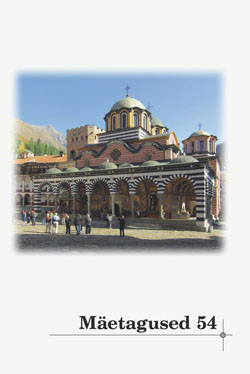Juurte juurde ja tagasi. Siberist remigreerunud eestlaste kodupaigakülastused kui näide sekulaarsest palverännust
To the roots and back. The trips of remigrated Siberian Estonians to their home village
Author(s): Aivar Jürgenson, Liivo NiglasSubject(s): Customs / Folklore
Published by: Eesti Kirjandusmuuseum
Keywords: Estonian diaspora; ethnographic film; pilgrimage; remigration; Siberia
Summary/Abstract: Ethnologists have been studying how people visit their former homelands mainly because of the semantic importance of the notions home, homelessness, nostalgia, roots and identity. Over the years, hundreds of people have moved to Estonia from Upper Suetuk, the village that was established by Estonian immigrants in southern Siberia in the 1850s. The former villagers visit Upper Suetuk frequently because the village identity and villagers’ solidarity have traditionally been strong in Siberia. The highlights of these visits are celebrations of St. John’s Day, on July 6 and 7, when the anniversary of the village is also celebrated. The aim of this article is to analyse a two-week trip to Upper Suetuk in summer 2010 by a group of people originating from the village. The authors present the trip to the former home village as a pilgrimage and analyse it by applying Victor Turner’s model of rite of passage. While collecting data for the research, the authors relied substantially on video camera as a methodological tool, in addition to participant observation and interviewing. The main focus of the analyses lies on the liminal phase of the trip, when the individuals find themselves withdrawn from normal modes of social action. The authors concentrate on the group’s behaviour (communitas) in the state of anti-structure, as well as on emotional and sensory aspects of this liminal phase of the trip. One of the most important notions here is the sense of freedom: many members of the group experienced it during the trip in Siberia, knowing that it cannot be transported back home. The authors show how the codes of language and behaviour keep changing during the trip; what significance the landscapes, buildings, special places and objects have for the people visiting the village after years of absence; how memories and sensory perception contribute to the emotional and embodied experience of the visitors. The trip to the former home village on St. John’s Day is a good indicator of the interaction between the present and former villagers and it can be useful for analysing the identity of both groups. The reason why people go for a pilgrimage – be it the real one or the quasi-pilgrimage as in this case – is to gain blessing, health, harmony and freedom. This paper is an attempt to demonstrate that pilgrimage-like trips can be undertaken also with an aim to go back to the roots or to the place of origin, in order to reinforce one’s identity. By visiting the former homeland, "the pilgrims” blend their two separate and somewhat partial identities into a single, coherent one.
Journal: Mäetagused. Hüperajakiri
- Issue Year: 2013
- Issue No: 54
- Page Range: 27-66
- Page Count: 40
- Language: Estonian

